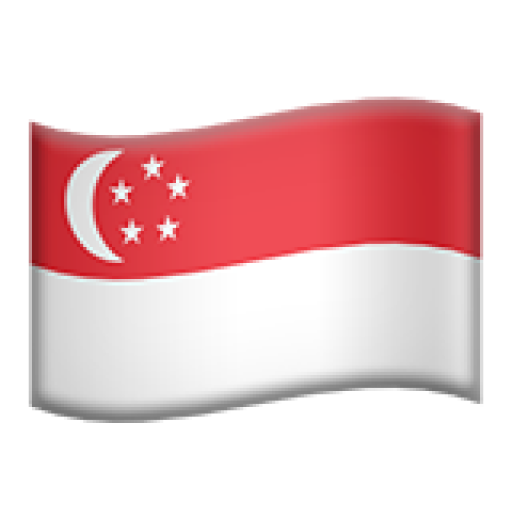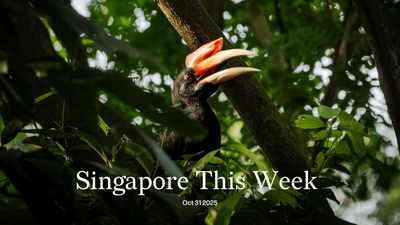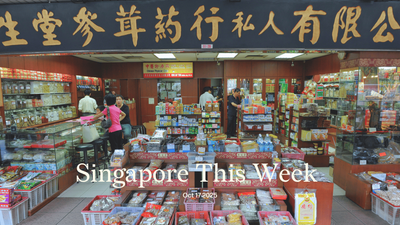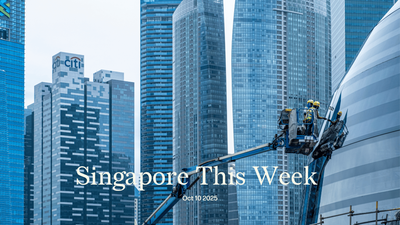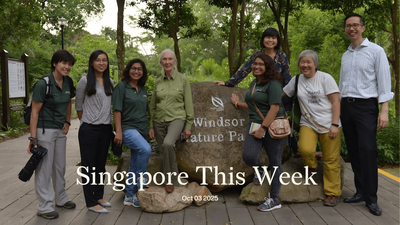Society: Interning up the heat
An increasing number of university and polytechnic students are chasing internships—the more the better—to improve their job prospects, among other things, said CNA. Already, we have achieved much. Childhoods short on agency and high on stress, adult lives ridden with anxiety and exhaustion, and old age saturated with loneliness. And now, that glorious interregnum which allowed for a pause, for a gathering of the self and the occasional heedless blowout is being filled with suits, meeting rooms and synergies. It’s a proud moment. Another brick in the monument to productivity we are intent on building.
Philosophers have long bemoaned this relentless drive. In his 1932 essay, “In Praise of Idleness”, Bertrand Russell wrote: “There was formerly a capacity for light-heartedness and play which has been to some extent inhibited by the cult of efficiency.” Russell’s utopia called for two things: the availability of leisure, enabled by technology (well, that didn’t happen), and cultivating a citizenry which could use that leisure intelligently. (The essay is worth reading in full.) He would have shuddered at the thought of undergrads doing half a dozen internships or tens of thousands of applicants vying for two internship positions at Google. Two thousand years before Russell, the Roman Seneca lamented: “Everyone hustles his life along, and is troubled by a longing for the future and weariness of the present.” A sentiment which finds an eerie, if less poetic, echo in one of the students CNA quotes. “It’s not really healthy to be in this perpetual state of grinding and hustling it out…”
Students are merely reacting to a system over which they have little control; many are driven by the need for pocket money and others are doing it to enter fields unrelated to their academic backgrounds. Internships aren’t entirely pointless either. Good ones can provide rich experience, help students gauge interest in their chosen fields, and facilitate a gentle transition into the working world. But when they become ends unto themselves, as boxes to be checked or as weapons in a résumé arms race—as is increasingly the case—it may be time to reconsider just what kind of society and citizenry we are creating. For “[l]eisure,” said Russell, “is essential to civilization…”
Society: The Islamic State’s pervading influence
Malaysia has brought terrorism-related charges against five family members of the suspect in the deadly Ulu Tiram police station attack last month—in which a man, using a machete and then a stolen pistol, killed two police officers and injured another before himself being shot. According to Malaysiakini, the family’s patriarch has been accused of encouraging terrorism, over the past 10 years, by instilling Islamic State (IS) ideologies in his Singaporean wife, two sons (including the suspect) and two daughters. Three other terrorism-related charges include: possession of four home-made firearms to carry out IS activities; possession of an IS-related book; and pledging allegiance to Abu Bakar Al-Baghdadi, IS’s leader. The three women were charged with one count each of deliberately omitting to provide information regarding crimes related to the ideology of terrorism, over the past seven years.
It wasn’t initially clear last month whether the attacks were terror related. Some early reports suggested possible links to Jemaah Islamiyah. This week’s news indicates that, just 20 odd kilometres from the causeway, another fundamentalist ideology may still hold sway with some.
Society: Amma-ma
Indian spiritual charlatans have roamed the world for centuries, often using their magnetism to lure the desperate. “Wild, Wild, Country” showed how Rajneesh (aka Osho) reaped riches while his incantations filled a void in the souls of post-industrial Americans. “Bikram: Yogi, Guru, Predator” revealed sexual exploitation by a scantily-clad Bengali while his eponymous practice stretched the bodies of post-industrial Americans.
But it’s not often that one hears about a faraway Chinese charlatan propagating a fake Indian spirituality to abuse and scam followers. From 2012 to 2020, 54-year-old Singaporean Woo May Hoe cheated her almost 30 followers of over S$7m. They were all “desperate for healing”, either suffering from serious medical conditions or had relatives who were. Woo convinced them that she was a deity, who could help them clear their bad karma and boost their good karma through donations to Sri Sakthi Narayani Amma, an Indian spiritual leader. The range of punishments she meted out included “stabbing them with scissors, using pliers to pull out their teeth, forcing them to consume human faeces, and making them jump off from a height”. She made one follower wash an injured eye with supposed holy water, and then stare directly at the sun. This person now requires lifelong treatment for possible glaucoma.
Singaporean courts this week sentenced Woo to 10 and a half years in jail. The deputy public prosecutor said that Woo had been professionally diagnosed as suffering from paranoid schizophrenia at the time of the offences. But there was no link between her mental state and her cheating offences, according to a doctor from the Institute of Mental Health. In an era when criminals employ high technology for their scams, this case is a reminder of the power, and danger, of in-person charisma.
Earth: Dark days for Singapore’s rich biodiversity
It’s been a black week for Singapore. A Netherlands-flagged dredger struck a stationary Singapore-registered bunker vessel in the southern port of Pasir Panjang, on June 14th. The impact unleashed about 400 tonnes of low sulphur fuel into Singapore’s waters. Stretches of the city-state’s shoreline at Sentosa, Labrador Nature Reserve, Marina South Pier and East Coast Park were covered in the slick, and the acrid smell of petrochemicals hung in the air. (“I was only exposed to the fumes for a short time, but my eyes are still sore, and I have a mild headache,” shared Nicholas Yeo, a local photographer, on Instagram.) The Southern Islands, a 400,000sqm marine-protected area, and the waters off Changi weren’t spared the contamination. Beaches were closed, and leisure activities were disrupted, but marine life and its ecosystem will likely bear the long-term costs of this man-made environmental disaster.
The Singapore Strait is one of the busiest sea lanes in the world, which makes it highly vulnerable to oil spills. The largest one happened in 1997, after two tankers collided, releasing 28,463 tonnes of oil. This latest dump seems like a small drop in the ocean by comparison. But the shock of its aftermath on the environment and images of oil-drenched birds has led the public to wonder how it could have happened in the first place (was there negligence involved?), and to a stationary vessel (was it anchored in the wrong location?). Port congestion was not the cause, said Chee Hong Tat, transport minister. Preliminary findings of an ongoing investigation, he revealed, showed that the allision was due to the dredger “experiencing sudden loss of engine and steering controls.” Authorities are managing expectations as to how quickly the mess can be cleared up, pointing to challenges due to changing tidal currents. Several beaches have been mostly cleared of the spill, Chee said yesterday, but reiterated it would take “some time” before all is removed.
Singapore will be seeking compensation from the owners of the stationary Marine Honour. “Costs for measures reasonably taken after the spill, resulting economic losses and environmental damage arising from the contamination can be assessed for claims,” it said. “The spirit of the ‘polluter pays’ principle simplifies the claims process by having a clear party against which to pursue claims without potential complications of proving fault.” Joseph Tan, a lawyer, told SCMP that it’ll be difficult to quantify the cost of the damage to the environment, marine life and mangroves. Time, perhaps, that we did cry over spilled oil.
Earth: Say ‘no’ more to petrochemicals
Singaporeans’ growing care and respect for the environment was evident in their response to the oil spill. Citizens came together in ways that they knew how, online and in chat groups, to express their dismay at the damage done to our coastline and wildlife. Many volunteered to help with the clean-up, while many more were concerned for the welfare of workers, mostly foreign, dispatched to do the dirty work of cleaning up what is essentially a corporate mess along our beaches. They noted that initially several workers weren’t wearing any personal protective equipment (PPE), their faces, arms and other parts of their bodies exposed to the toxic chemicals, potentially jeopardising their health. And though they were eventually given proper PPE, many apparently had removed their masks, understandable given the scorching heat they were made to work in. Singaporeans were also curious about the impact of the oil spill on fish farms and our desalination water supply. PUB, the national water agency, reassured that water quality readings remain “normal”, saying that there is no “impact to…freshwater reservoirs.” Meanwhile, dispersants used in oil spills were beset by questions about their safety and effectiveness, and whether mixing dispersants and oil was more toxic to the environment than the oil itself. But experts have said the answer is “largely no”, according to a report by the National Academy of Sciences in Washington, DC. And the US’s Environment Protection Agency has acknowledged that the long-term effects of dispersants on aquatic life “are unknown”.
It’ll be useful for the authorities to consider how standard operating procedures can be improved in the event of future oil spills. Some suggestions from the public include: better clarity on affected areas, including providing a healthcare advisory around air and water quality; and protecting workers’ health and safety by following international guidelines on appropriate PPE attire, as well as to consider requiring the contracting company to monitor workers’ health post-clean-up. Or better still, instead of crying over spilled oil, it’s maybe time to reevaluate our position as one of the world’s largest petrochemical hubs. This will necessitate a radical rethinking about “growth”. As our planet teeters dangerously close to the edge of ecological collapse, it’s no longer a question of how, but now.
History weekly by Faris Joraimi
Today marks the 30th anniversary of the ban on Tempo, Indonesia’s leading political weekly, which set in motion one of the most significant struggles for press freedom there. On June 21st 1994, the dictator Suharto and his “New Order” administration revoked the magazine’s publishing licence, even though the licensing scheme had already severely curtailed media independence and made it vulnerable to state control. The ban came after Tempo ran six investigative pieces about the government’s purchase of East German warships at an inflated price, alleging corruption. Apparently, this also irritated Suharto because it damaged the reputation of BJ Habibie, then-technology minister and his favourite Cabinet member. Suharto accused the magazine of “pitting people against each other” and “disturbing [...] national politics and stability.”
Tempo was founded in 1971 by Goenawan Mohamad: poet, essayist, playwright. He was editor-in-chief when the ban befell Tempo. On the evening of June 27th 1994, he recalled, a few Tempo executives were given an ultimatum by Hashim Djohohadikusumo, a general, Suharto’s son-in-law and also younger brother of today’s Indonesian president-elect Prabowo Subianto—replace all your directors, said Hashim, or face a permanent ban. When Tempo was first outlawed in 1982, Goenawan compromised, but not this time; he couldn’t face his children if he surrendered, having raised them on stories of their grandfather who was killed by Dutch colonial forces. Running a newspaper under the Suharto regime, Goenawan described, was like piloting a hijacked flight. The hijacker is willing to crash the whole plane if the pilot makes one wrong move. True enough: along with Tempo, the magazines Detik and Editor were also banned that year, leaving hundreds of media workers jobless.
Yet the government’s draconian manoeuvres failed to achieve a chilling effect. Instead of being plunged into deeper collective fear and mutual surveillance, student organisers, journalists, artists and activists rallied together, a number of whom founded the Alliance of Independent Journalists to fight government-controlled media. When Suharto’s regime collapsed in 1998, it was Habibie, ironically, who lifted the ban, and resurrected the “Time magazine of Indonesia”. With significant coverage of art and literature alongside current affairs, Tempo’s writing remains famously attentive to style as well as credibility. Goenawan’s popular weekly column “Catatan Pinggir” (“notes on the margin” or “sidelines”) also developed an ambiguous tone to avoid censorship. I really like Tempo’s slogan, “Enak Dibaca dan Perlu”—a pleasure to read, and necessary. A worthy aspiration for Jom.
Arts: Who cares? CITRUS Fest does
In the thick of the pandemic, a group of artists came together to seed and sow ideas about what making performances with care might look and feel like. Many of them had been stripped bare by Covid-19 restrictions and impositions: burned out, but also out of work. This five-session workshop series in 2020 grew buds, roots and leaves, and eventually took the shape of CITRUS practices: a gathering of arts workers committed to Care, Intimacy, TRaUma-informed and Safer practices in the arts. These artists are now inviting others into the shade of their tree by throwing a little “potluck” festival from June 28th to 30th, one that centres care and reciprocity. You can bring your experiences, questions and an empty stomach to “CITRUS fest: Who Cares?”, which will feature discussions, workshops and communal dinners. Whether it’s a three-course, sustainably-sourced vegetarian dinner, an introduction to intimacy and consent in performance, or thinking through better support structures for artists who are parents or caregivers, it’s a festival dedicated to the often precarious processes of artmaking, in an industry where one in three practitioners identifies as a gig worker (significantly higher than the national average of one in five).
The festival opens just as health technology provider Telus Health released survey results last week showing that nearly half of Singaporean workers feel exhausted after a day of work, and that two-thirds of these workers have at least one of three indicators of burnout: exhaustion, cynicism, and diminished performance. In the “always on” culture of a “highly stressed society”, how might the labour of care be redistributed so that everyone feels that they can offer others what they need, but also receive the care they want? The festival prompts us to think about care as a collective act, rather than an individuated one. Its organisers will also be providing access services, such as speech-to-text interpretation for d/Deaf and hard-of-hearing attendees, and child-minding support for parents. Instead of resigning ourselves to “this is how things are”, CITRUS fest responds: “this is how things can be”.
Disclosure: Corrie Tan, Jom’s arts editor, was part of the creation of CITRUS practices.
Tech: Oddle’s financials start to turn idle
Oddle, a play on the Singlish pronunciation for order, offers e-commerce solutions to food providers and end-to-end services for restaurants. Unlike Grab and Deliveroo, which aggregate different vendors on a single page, Oddle works behind the scenes. It provides its relatively more upmarket clients, like the Les Amis Group and Pan Pacific Hotel, with everything from their own web storefront to logistics and delivery. It was lauded for helping to save the F&B industry during the pandemic. “Some restaurants are fishing in swimming pools where there are no fish, while others want to catch sharks in a small pond where there are only goldfish,” co-founder Alan Goh once told CNA. “We not only sell them the fishing rod, but we teach them how to get the fish they want.”
But, like Zoom, Oddle has been suffering a post-pandemic hangover, as we first wrote last May. Its recent FY22 financials show a decline in revenue. For the nine-month period ended December 31st 2022, it reported S$15m in revenue, a 37.5 percent drop (based on annualised revenue) from the S$32m it earned for the financial year ended March 31 2022. Meanwhile, the company’s loss that financial year widened to S$5.6m, more than twice its loss for the previous one on an annualised basis. Oddle’s lacklustre financials for FY22 is attributed to the natural reduction in delivery volume as dining restrictions eased.
Oddle, which earns a commission for every order, has been trying to enhance client sales through data-driven solutions like restaurant reservations and payment terminals. Despite challenges in certain product offerings, such as the discontinuation of its QR code-based ordering solution, the company remains agile in refining its product portfolio to align with market demand—what restaurants today, post-pandemic, actually need. At the end of its 2022 financial year, the company was left with approximately S$10m in cash and cash equivalents. This possibly contributed to cost-cutting measures where it laid off 25 percent of its staff across the four markets in Singapore, Taiwan, Hong Kong and Malaysia. Like other businesses that boomed during the pandemic, the one thing that might actually save the firm is another catastrophe that forces us all indoors, from where we’re forced to oddle our next meal.
Tech: Making Singapore the regional centre for data centres
Data centres, those gargantuan facilities that form the backbone of our digital economy, ensuring you can read Jom for instance, are mushrooming across the planet. As more of the world comes online, as we consume more content, and as the use of incredibly resource-intensive Artificial Intelligence spreads, the future for data centre operators looks rosier than ever. Keen to get in on the action, a consortium led by KKR, an investment firm and also including Singtel has announced it will invest at least US$1.3bn (S$1.8bn) and as much as US$2.2bn (S$3bn) into ST Telemedia Global Data Centres (STT GDC). STT GDC already operates nearly 100 data centres in 11 countries, and this development promises to turbo-charge its growth, given the pace at which the industry is growing in the region. Singapore is currently the largest data centre market in South-east Asia but Johor Bahru in neighbouring Malaysia is catching up fast. By some estimates, it could overtake Singapore in the next two years. This competition is great as far as the KKR-led consortium is concerned. For if meeting demand for data is the new gold rush, then STT GDC is one of those handing out the shovels.
This development comes soon after Google announced its fourth data centre here, which brought the company’s total infrastructure investment in Singapore to S$6.7bn. This trend of significant financial commitments from tech giants is bound to contribute more broadly to the region’s technological advancement and digital economy.
If you enjoy Jom’s work, do get a paid subscription today to support independent journalism in Singapore.

